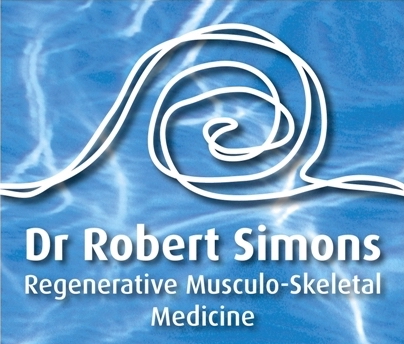The Most Common Musculoskeletal Injuries that Dr. Simons Treats Include:
Meniscal Injury of the Knee
Sudden awkward rotational movements can cause even a healthy meniscus in a young person to tear. After 50, about half of the population have degenerative tears of the menisci, which may be asymptomatic or so debilitating that even a minor movement may cause pain and injury to the knee. Additionally, meniscal injuries can occur as a result of traumatic injury.
No matter how meniscal injury occurs, it is one of the most common reasons for people to seek orthopaedic help.
Treatment can range from physical therapy and rehab in milder cases to surgical intervention in severe tears, where the tear is causing locking or intractable pain in the knee.
Arthroscopic surgery has been shown to be no better than non-surgical intervention. Additionally, the long term complications that comes with the surgical removal of meniscal material causes onset of early arthritis in the knee.
Trephination is a treatment which has demonstrated to be an effective alternative to arthroscopic surgery. Trephination is an office procedure conduced under ultrasound guidance with the use of local anaesthesia. The idea behind the procedure is to create tunnels from the peripheral zone of the meniscus where the cartilage is red with blood vessels to the inner or white zone of the meniscus where blood supply is all but absent. The tunnel creates a channel for the access of blood supply to the white meniscal tissue where the tear lies.
This method has been demonstrated to be effective in 92% of patients with meniscal tears if the trephination was performed with simultaneous injection of PRP into the tunnels.
This study looks at the short-term outcomes of Percutaneous Trephination with a Platelet Rich Plasma Intrameniscal Injection
ACL Tear in the Knee
The Anterior Cruciate Ligament (ACL) is the strong central ligament that holds the knee together. In young healthy athletes tears often occur with an awkward landing on the leg, however can also happen as a result of a minor incident to an already degenerated ligament.
Treatment ranges from surgical reconstruction of the ACL in severe tears and full rupture to physical therapy and rest.
PRP and other injections can aid the recovery of the ligament without surgery.
In partial tears of the ACL where physical therapy is not returning the knee to normal function, percutaneous (without cutting the skin) repair of the ACL can be initiated and the athlete can return to action more quickly.
Carpal Tunnel Syndrome (CTS)
CTS usually presents as pain and numbness in the thumb side of the hand at night in bed, or when driving a car. CTS is caused by compression of the median nerve in the wrist region by tight fascia (connective tissue).
Effective treatment of this condition can often be achieved by non-surgical means.
A technique called hydro-dilatation can be performed. Hydro-dilatation is the injection of fluid between the planes of tissue that surround the nerve, thereby opening up the constriction around the nerve that causes the symptoms. Restriction of the small blood vessels to the nerve can cause it to be damaged. Thus hydro-dilatation may need to be performed simultaneously with PRP which release growth factors (VEGF) that stimulates regeneration of blood vessels.
Shoulder Tendon Injury
The rotator cuff tendons include the supraspinatus, subscapularis and the infraspinatus tendons. These tendons provide the shoulder with a major part of its capacity to move with power in all directions. Another important shoulder tendon is the long head of biceps tendon. When damaged, there is pain using force in various directions depending on the tendon(s) involved.
Shoulder tendons frequently present with injury such as tendinopathy or tear and less commonly rupture.
In the past, tendon injury was left unaddressed except for injury bad enough to require surgery. Physical therapy provides slow and often poor outcomes.
Historically, the only offered treatments for shoulder tendon injury were cortisone injections and surgery, which were both reserved for more serious cases. However, this approach began to change when regenerative therapies came along. Now there is a modality that can address degenerative tendon injury.
Diagnosis of shoulder tendon injuries is made by a combination of physical examination and ultrasound imaging at the time of consultation. A diagnosis consists first of understanding the structures that are responsible for pain, and secondly finding the damaged structures.
Pain mapping is very useful in finding the pain-producing culprit.
Too often patients are diagnosed with ‘bursitis’ when in fact the most important dysfunction is arising from other structures such as the tendons. Consequently, patients are sent for a cortisone shot to the bursa, which appeases the pain of the general area, only to fail because the true structural injury was not diagnosed.
At Joint Medicine pain mapping will reveal the cause of shoulder pain, and the appropriate treatment is discussed, be that regenerative injection, or surgery. We frequently inject shoulder tendons with PRP and more potent regenerative substances with benefit to patients.
This study demonstrates the effectiveness of platelet-rich plasma injections for rotor cuff tendinopathy.
This list is in no way exhaustive
